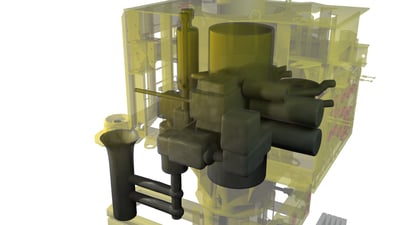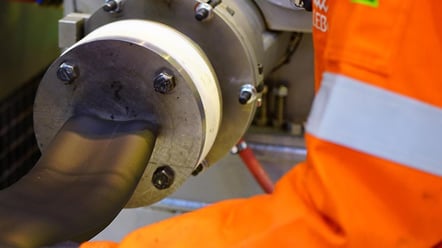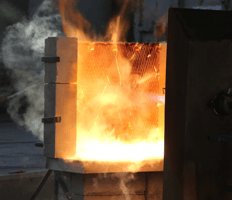Fire and corrosion remain two of the greatest threats in the defense industry, concerning the...
The role of rubber in subsea flow assurance
Thermal insulation and coating of subsea pipelines and structures has been a vital tool in the flow assurance world, offering a means of providing predictable and reliable thermal performance over the lifetime of oil and gas fields. Over time, products have been refined regarding thermal performance, depth, temperature capability, deployment, and operation. Today’s products have generally been field-proven, in some cases for decades, and their robustness is without question within their qualified performance envelopes. The introduction of the ISO 12736 standard has given much stability to the qualification process, as it prescribes a number of tests on both materials and systems, which prove suitability and generate data that is of great importance in the insulation design process.
 Rubber Material Technology
Rubber Material Technology
Rubber materials have been used in subsea thermal insulation systems for 50 years and have proven performance. The variety of materials available is vast, although most of the systems available are based on polychloroprene (1), butyl rubber (2) nitrile rubber (3) and hydrogenated nitrile rubber (4) and ethylene propylene rubber (5).
Rubbers are convenient materials to handle and apply, as hand applied systems on either blasted and primed steel, or onto suitable abraded anti-corrosion coating. These materials do not require molds or high temperatures for application, unlike fluid or melt processed systems. This shortens lead time and gives a quick on-site mobilization. These materials are conveniently applied using simple hand tools, which also reduces the footprint of the process. Overall application rates are very competitive with other available systems, when mobilization of molds, sealing of molds, pumping time and their removal post casting are considered.
One of the aspects of rubber technology which has hampered wider use is the vulcanization step. The reason for this having been a hinderance is three-fold.
- Vulcanization processes have historically required components to be placed in an autoclave, which is not possible in many cases due to the size of the workpiece or the lack of an autoclave close to the client’s preferred application site.
- The vulcanization step generally takes some considerable time as the applied coating is often quite thick. Multi-step vulcanization for very thick materials can lead to long overall application times.
- Vulcanization has required the use of high temperatures (120oC and above) for extended periods of time.
Other Material Considerations
When rubber coating items, it is important that the material also has sufficient ability to merge, coalesce and bond to itself and the substrate. This property, known as “tack”, must be optimized as part of the product development process. In addition to the material’s tackiness, the vulcanization package must allow for the flow and merging process in the initial heating stage of the cross-linking and a period known as the “scorch time” must be long enough to allow application and flow. A good combination of scorch time and tack is important for product uniformity and integrity. These new formulations have an excellent balance of tack and scorch time, giving a fully coalesces product following vulcanization.
The material’s  tendency to exhibit elastic properties, even in the uncured state, has to be considered for hand application purposes. It is important that this aspect, known as “nerve”, is as low as possible, but without sagging. Materials with excessive nerve tend to recoil. This creates potential problems with merging of materials, maintaining contact with substrates and the formation of complex geometries. The new formulations have low nerve.
tendency to exhibit elastic properties, even in the uncured state, has to be considered for hand application purposes. It is important that this aspect, known as “nerve”, is as low as possible, but without sagging. Materials with excessive nerve tend to recoil. This creates potential problems with merging of materials, maintaining contact with substrates and the formation of complex geometries. The new formulations have low nerve.
Low temperature vulcanizing formulations
Formulations of low temperature vulcanizable rubber have been developed. These materials eliminate those hurdles that have limited the penetration of rubber systems into the subsea thermal insulation market.
Commercially available formulations[1] are now available, which have the capability of providing a high level of reliable insulation at temperatures up to 180oC at the full 3000m water depth. These systems have been thoroughly tested and qualified in accordance with ISO 12736 and have established track record.
These materials are conveniently delivered to site as a 2-component system for blending and extrusion to profiles, or as pre-extruded strip stock in refrigerated containers. The materials are readily applied to blasted and primed steel, or to a suitably abraded anti-corrosion coating using simple hand tools. Simultaneous application and vulcanization is possible due to the low vulcanization temperature, removing the wait time between application layers and speeding up the overall coating process. Low temperature vulcanization removes the need for autoclaves and the flow-cure characteristics of the materials gives a fully coalesced product.
Considering site application, these new formulations give:
- Rapid site mobilization with no requirement for up-front engineering
- High application rate
- Small footprint of necessary equipment
- Low temperature vulcanization without autoclave
- Low threshold for training of local applicators
For the end user:
- Low thermal conductivity
- High heat capacity
- Hydrothermally stable at in excess of 180oC
- Water depth capability in excess of 3000m
- Highly resilient and robust system
- Fully qualified in accordance with ISO 12736







